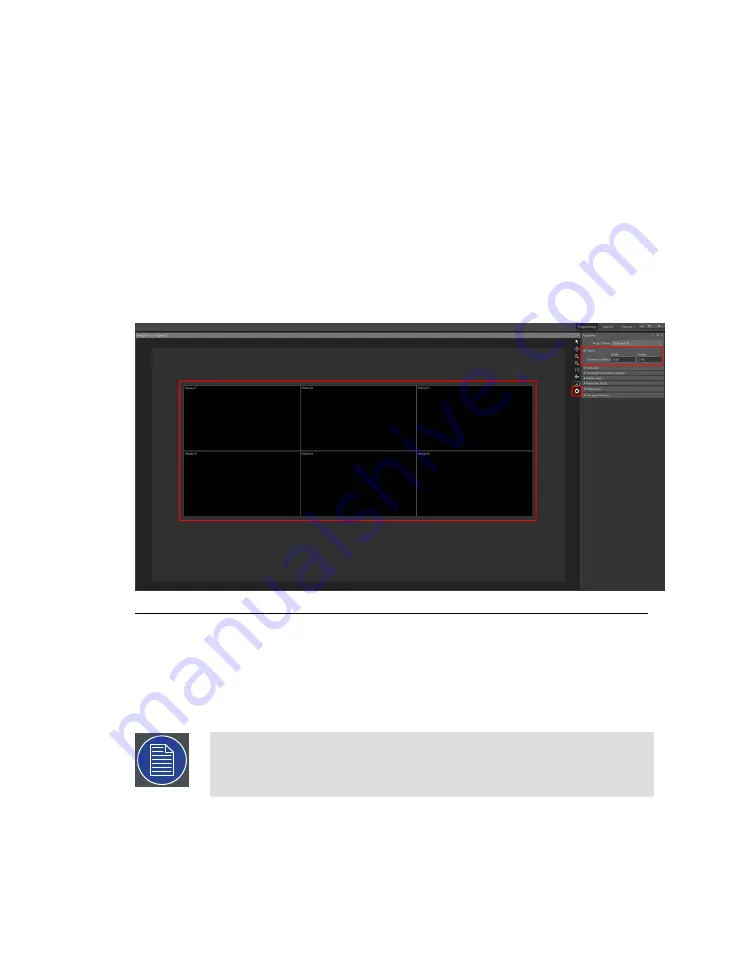
1.
Create a new 2D project.
2.
Define the canvas dimensions based on what is needed for the project.
3.
Create displays and position them in the canvas.
4.
Add timelines and media as in 3D mode.
and
can be used if needed.
5.
Proceed with calibration, output control, and playback as in 3D mode.
8.1.2
2D concepts
Canvas
Figure 8.2. Canvas
The canvas is a 2D workspace in which your project is built. The canvas is a visual ref-
erence, giving you a way to build boundaries within which to work. No restrictions
force you to place displays and elements within the canvas, but it is strongly suggested
that you do so for convenience. The canvas is defined by its width and its height in
pixels. You may access these properties by using the gear icon in the Viewport's toolbar.
Note
The size in pixels of the canvas itself has no effect on performance whatso-
ever. A canvas can be defined to be as large as is necessary.
Barco Pn: 60600325
192
Section 8: Features
Barco Media Server XPR-Series User Guide
Summary of Contents for XPR-600
Page 1: ...Barco Media Server XPR Series User Guide Part number 60600325 Version 00 00 January 22 2016...
Page 4: ...HighEndSystems Barco Pn 60600325...
Page 11: ......
Page 17: ......
Page 19: ......
Page 63: ......
Page 79: ......
Page 131: ......
Page 145: ......
Page 235: ......
Page 237: ......
Page 247: ......
Page 255: ......
Page 267: ......
















































